Many fishkeepers use gravel as their aquarium substrate. Understandably, this popularity is linked to the facelift gravel can give to an aquarium. But while it raises the aesthetics of an aquarium, gravel can also be a snag if you intend to grow plants in the aquarium.
In other words, while you can grow some aquarium plants in gravel, others will not do so well in it.
So, if you are bent on sticking with gravel as your substrate, opt for aquarium plants you can grow in gravel. Below, we discuss 15 options for you.
Table of Contents
Dwarf Hairgrass

Dwarf Hairgrass is a freshwater plant from the Cyperaceae family. It is pretty popular in Europe and North America and even as far as South America and Asia.
Dwarf Hairgrass has a grass-like appearance with blades or strands in place of leaves. Each blade or strand is thin and used for photosynthesis. Dwarf Hairgrass is fast-growing, and when fully grown, the blades measure around 4-6 inches.
Dwarf Hairgrass creates a carpet-like field at the bottom of your tank, and its grass-like appearance gives the bottom of your tank a luscious green coat.
The benefit of using Dwarf Hairgrass in your aquarium goes beyond aesthetics. This freshwater plant also helps to remove pollutants, oxygenate the water, and provides shelter to bottom-dwelling fish.
Dwarf Hairgrass has thin white roots that are barely visible once you plant them since they mostly stay in the substrate. They prefer soft substrates like fine gravel or sand. When using gravel substrate, ensure you get grains that will not damage its delicate roots.
Amazon Sword

The Amazon Sword plant is a popular aquatic plant indigenous to the Amazon River Basin. It is so named because of its sword-like leaves.
This easy-to-care-for plant is excellent for beginners. But beyond that, it can raise the outlook of your aquarium, giving the tank a forest-like effect.
Amazon Sword is bushy with a short stem, and its leaves extend straight from its root. The leaves make up most of the plant’s length, measuring around 14 inches. Amazon Sword is a large plant, and on average, it grows 15-16 inches tall.
Amazon Sword has large and powerful roots that spread out and deeply penetrate the substrate. When you plant Amazon Sword ensure there is enough gravel in your tank. Ensure the substrate used is at least 2.5 inches thick to accommodate the sturdy rootstock of the plant.
Avoid planting the roots too deep and ensure the gravel is loosely packed. You can place the plant at the center of your tank to give it the space it needs to grow.
Being as hardy as it is, Amazon Sword can thrive without fertilizer. But it will perform even better when supplemented with fertilizer.
Anubias
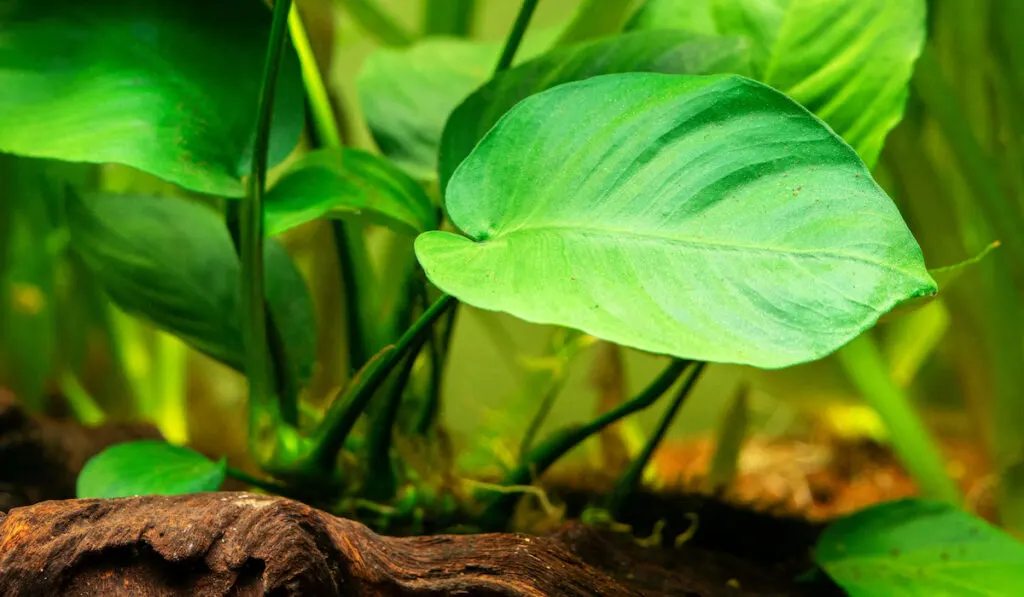
Anubias is easy to care for and hardy, and this makes it perfect for beginners. Some of the most common Anubias species used in aquariums include Anubias afzelii, Anubias nana, Anubias heterophylla, and Anubias barteri.
Anubias has broad, thick, dark leaves that appear in different forms. They are large plants that can provide shade for different types of aquariums. Although they are slow-growing plants, when they mature, Anubias can measure around 11 inches.
You can plant Anubias in any substrate, including gravel, provided it gets the correct care.
When you plant Anubias, avoid burying it too deep. Also, ensure the substrate used is soft and has a fine texture. This way, the plant can absorb nutrients from its environment, and the roots have room to grow.
Although using fertilizer is not necessary, applying root tabs to the gravel ensures the plant remains healthy.
Java Fern

Java Fern is a jungle plant native to South East Asia. This plant tends to grow around tree trunks, on rocks, and on the ground. It can also grow while partially submerged or fully submerged.
Java Fern can thrive with little maintenance and can adapt to almost any environment. And, of course, it can be grown in gravel substrate. Just ensure you do not let the roots run too deep, else they die.
Java Fern has two main components: the leaves and the rhizome. The rhizomes are dark brown strings that act as anchors and attach themselves to different surfaces. The leaves are leathery and colored dark-green.
Java Fern is ideal for various tanks, including show tanks, community tanks, and heavily planted tanks. When mature, it grows to about 13.5 inches in height and 6-8 inches in width.
Java Fern thrives best in smaller gravel and fertilizer. Whatever you do, do not let the plant stay buried for too long, else the rhizome will die.
Vallisneria

Vallisneria is a tall, grass-type plant that looks like seagrass. It is easy to grow and is found in tropical climates with warmer waters.
Vallisneria is easy to propagate and ideal for bare aquariums that require more coverage. You can place it as a blanket in your tank or place it around the edges of the fish tank.
You can grow Vallisneria in gravel. However, you do not need too much gravel substrate. A small layer is enough for you to bury the roots.
To plant Vallisneria, place the roots under the substrate and leave the crown above the gravel to allow the leaves to grow out. With the right pH level, Vallisneria can reach heights of 8-16 inches.
Anacharis
Anacharis is a popular aquarium plant native to Argentina, Southeast Brazil, and Uruguay. This aquarium plant is well known for its adaptability, versatility, and attractive growth.
Anacharis has lush green foliage with finely serrated leaves. While the leaves are generally green, you can find them in hues ranging from bright green to light green. The variation in pigmentation is dependent on the water condition of its environment.
The height of the plant depends on how deep the water is. Therefore, in the wild, Anacharis can reach heights of around 9 feet. But in captivity, it does not reach such heights.
You can plant Anacharis on any substrate, including gravel. This is possible because Anacharis can extract nutrients from the water column and substrate.
To grow Anacharis, ensure you place each stem in gravel substrate that is 2 inches deep. If you plant your Anacharis too shallow, you will end up with floating shoots. But if you plant them too close, you will limit the room for growth.
Bucephalandra
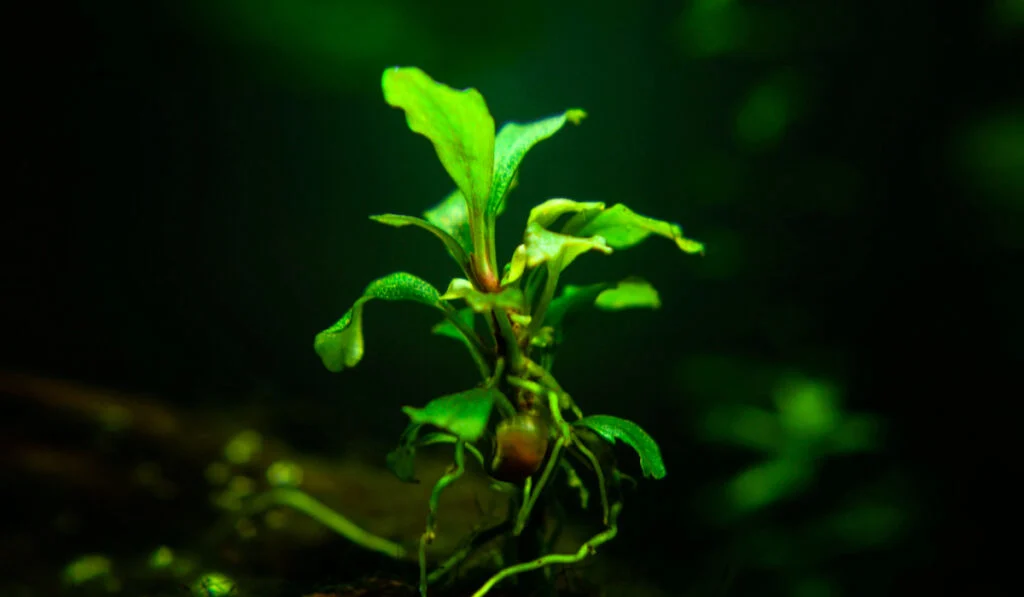
Bucephalandra is an aquatic plant indigenous to Borneo, Indonesia. This slow-growing plant comes in different variants, each with unique leaf color, shape, and size.
Bucephalandra is easy to care for, and with appropriate care, it can become the centerpiece of your aquarium. At maturity, Bucephalandra can reach a maximum height of 4 inches.
You can grow Bucephalandra on driftwood, rocks, and gravel substrate.
To grow Bucephalandra in an aquarium, you need thick gravel – something larger-sized than the regular ones. Also, ensure the substrate is porous, so the roots can attain total immersion.
Bucephalandra is a natural rheophyte, and it uses its root system for anchorage. When you attach Bucephalandra, ensure the plants do not fall off before the roots anchor themselves. You can use fishing wire, superglue, or rubber bands to secure your plant on the gravel.
Dwarf Sagittaria
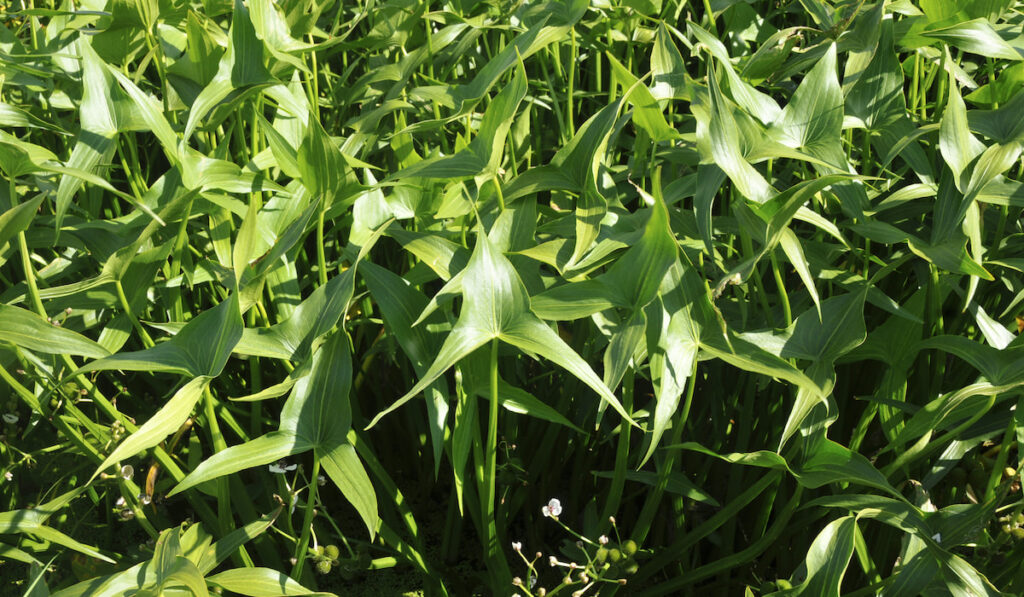
Dwarf Sagittaria belongs to the Alismataceae family and is indigenous to the United States and Colombia. It may also be called Narrow-Leaved Arrowhead or Awl-Leaf Arrowhead.
Dwarf Sagittaria has bright green foliage with short and stiff leaves. When fully grown, it can reach heights of about 4-6 inches.
Dwarf Sagittaria is easy to care for and highly adaptable. It can also tolerate hard water and high pH.
When you plant Dwarf Sagittaria in gravel, ensure you supplement the gravel substrate with enough nutrients. Dwarf Sagittaria requires a lot of fertilizer to grow and remain healthy.
Cryptocoryne
Cryptocoryne belongs to the Araceae family. It is indigenous to the tropical regions of New Guinea, India, and Southeast Asia, where it can be found in rivers and streams that do not flow rapidly.
Cryptocoryne is a hardy aquarium plant, and it can thrive in both hard and soft water. It comes in various colors, and it requires stable conditions for optimal growth.
You can plant Cryptocoryne in gravel or sand substrate. Like other aquarium plants, it prefers an enriched substrate.
Cryptocoryne has a broad root system, and this makes gravel its ideal substrate. When planting Cryptocoryne, ensure you have at least three inches of gravel substrate in your tank, and the roots remain firm in the substrate.
Madagascar Lace
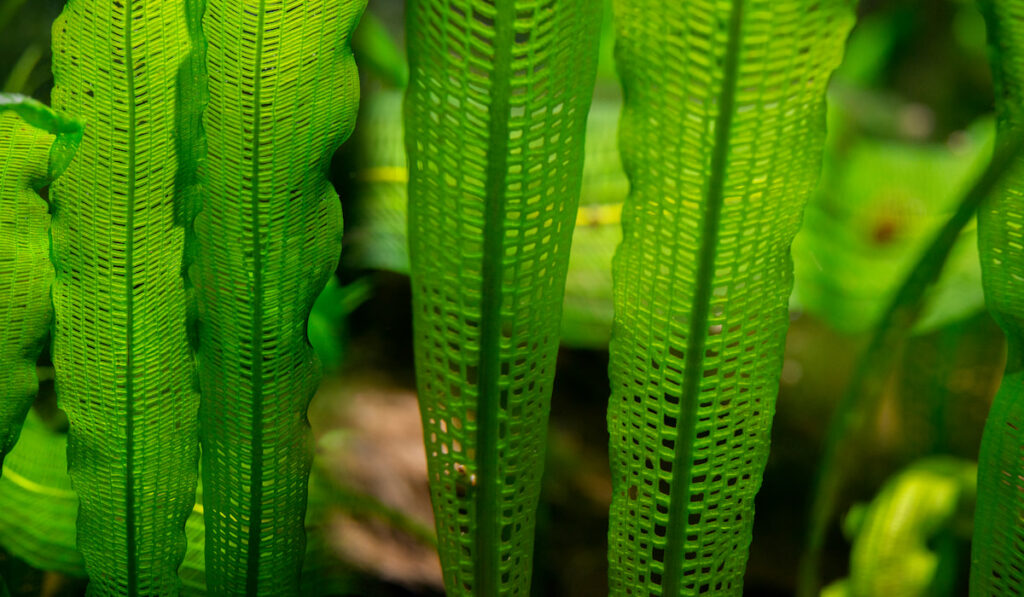
As you may have guessed, Madagascar Lace is indigenous to the island of Madagascar. Although it is a bit complicated to care for, you can grow it in any home aquarium. It can also adapt to light fluctuations, temperature, water hardness, and Ph.
Madagascar Lace has a delicate-looking appearance that is quite deceptive. But this plant is sturdy and resistant.
The leaves of the Madagascar Lace have no connective tissue, and this gives them a lacy form.
A fully grown Madagascar Lace is about 10-24 inches tall and 10-12 inches wide. It grows well in gravel, but you must ensure the conditions are right to support its growth.
Avoid burying this plant too deep in gravel substrate; about 2 inches of substrate should suffice. You can also add fertilizer to your gravel to ensure your plant thrives.
Red Tiger Lotus
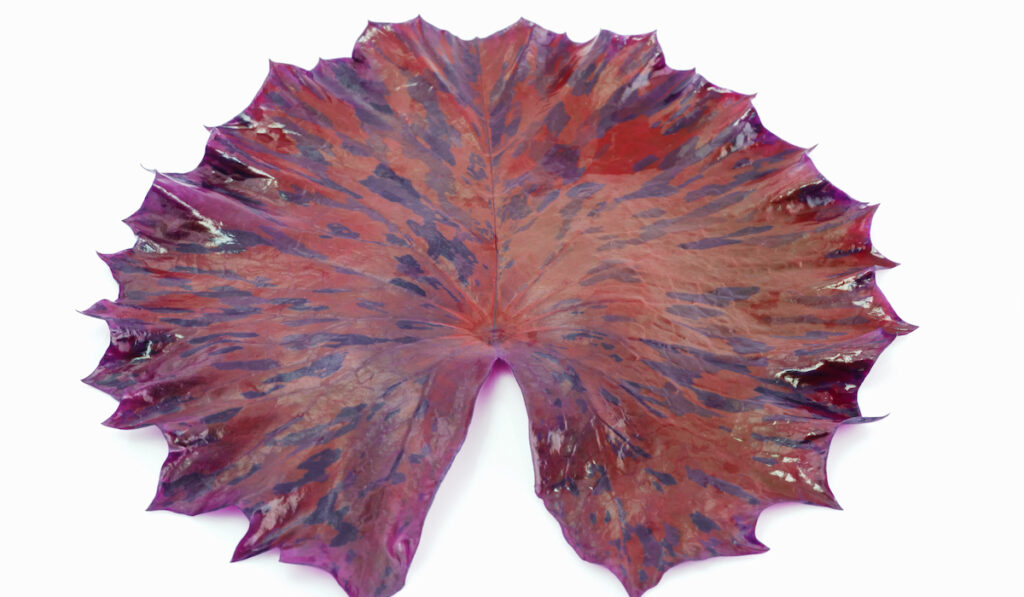
Red Tiger Lotus is a freshwater plant that grows in the stagnant waters of West Africa. It primarily grows in lakes, ponds, and sometimes shallow waters. Thankfully, the characteristics of the native environment of the Red Tiger Lotus allow it to adapt to different conditions.
Red Tiger Lotus is easy to care for, and it gets its name from the unique red color of its leaves. It has arrow-shaped leaves and is often considered a lily pad due to the shape of its leaves. Red Tiger Lotus can grow around 7-13 inches tall and 9-23 inches wide.
You can plant Red Tiger Lotus in the gravel, but you must do so correctly to get the best results. When you plant, ensure you bury the roots in gravel. Avoid covering the bulb of this plant if you want it to grow right. Ensure you infuse your gravel substrate with adequate fertilizer since this plant requires a lot of nutrients to thrive in water.
Ludwigia repens
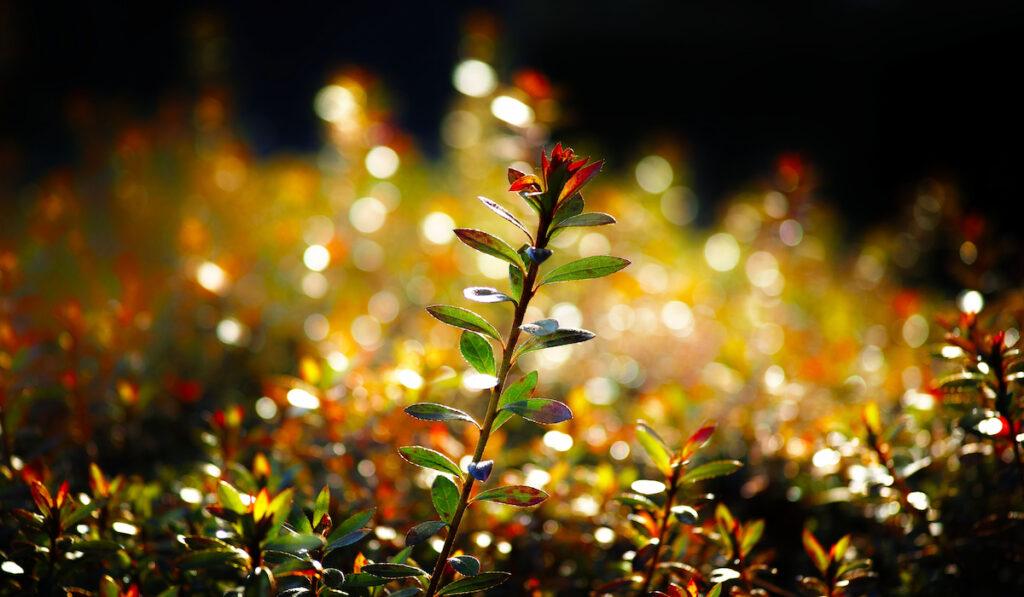
Ludwigia repens is a stunning aquarium plant indigenous to the tropical waters of Central and North America. This fast-growing plant is also called Creeping Primrose-Willow, Ludwigia repens Rubin, or Red-Leaf Ludwigia.
Ludwigia repens is amphibious, and you can place it in your tank fully or partially submerged. When it is fully submerged, the leaves change from dark green to deep red or brownish-red. The leaves of Ludwigia Repens have olive green tops and red undersides. Besides being great for aquariums, Ludwigia repens makes an excellent background plant.
You can plant Ludwigia repens in any substrate, including gravel. It does not require any fertilizer to thrive but requires additional CO2 to bring out its red coloration.
Water Sprite
Water Sprite is a common aquarium plant that belongs to the Pteridaceae family. This plant is easy to care for and makes a beautiful addition to any tank.
Water Sprite can either be planted in substrate or left to float. It provides plenty of shade for your tank and gives your fishes a place to hide if they feel threatened.
Water Sprites have a bright green color giving your tank that lush and full appearance. The stem of this plant tends to be darker than its leaves.
You can plant Water Sprite in any substrate, including gravel. Enriching the substrate with nutrients will do a lot of good for the plant.
Giant Hygrophila
Giant Hygrophila is indigenous to Thailand. This fast-growing plant has robust stems and large dark green leaves with smooth edges. It is also hardy, easy to maintain, and ideal for beginners.
Giant Hygrophila helps produce oxygen, remove algae, promote clarity and help to clean the water in your tank. A fully grown Giant Hygrophila can reach a height of 24 inches, and once established, it will produce velvet-colored flowers.
You can plant Giant Hygrophila in any substrate, but it prefers fine gravel.
Growing Giant Hygrophila in gravel substrate is uncomplicated. Simply lay it on the substrate and watch the stem produce roots that penetrate the substrate automatically.
Hornwort
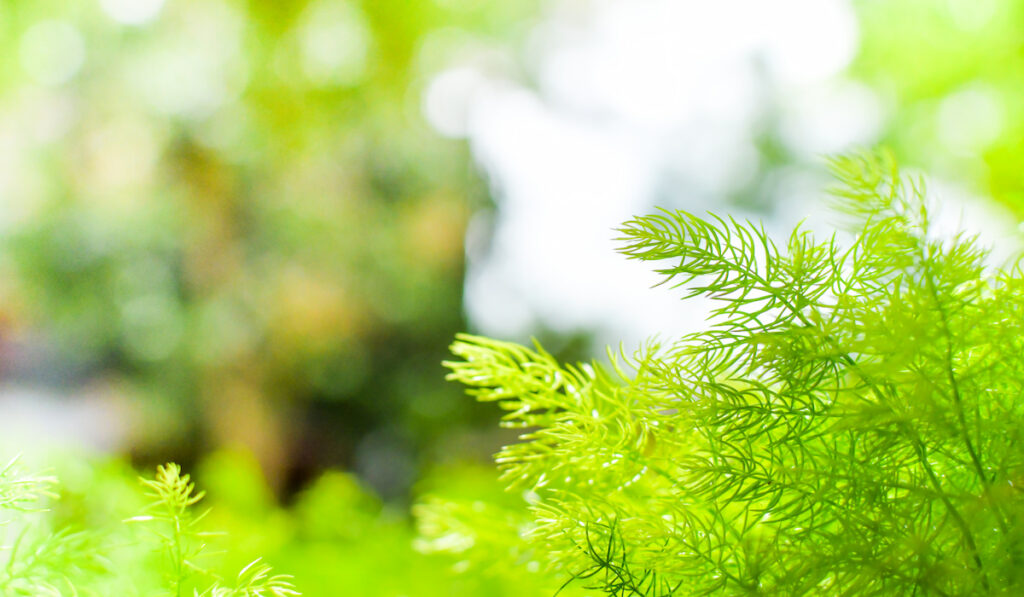
Hornwort is a freshwater plant native to North America but has spread to every continent except Antarctica. This fast-growing plant can tolerate a variety of water conditions, and this makes it ideal for beginners.
You can either root Hornwort in a substrate or use them as floating plants.
Hornwort is a dark green plant, but you can come across a lighter shade of green in warmer environments. A single Hornwort plant produces multiple stems that tend to resemble those of other plants.
You can grow Hornwort in any substrate, including gravel.
Hornwort does not have true roots. However, it has leaves that it uses to anchor itself in the substrate. Hornwort can also grow rhizoids for use as an anchor.
Resources
- https://www.fishkeepingworld.com/dwarf-hairgrass/
- https://www.fishkeepingworld.com/amazon-sword/
- https://www.fishkeepingworld.com/java-fern/
- https://aquariumbreeder.com/anacharis-care-guide-planting-growing-and-propagation/
- https://aquariumbreeder.com/dwarf-sagittaria-care-guide-planting-growing-and-propagation/
- https://www.fishkeepingworld.com/madagascar-lace-plant/
- https://theaquariumguide.com/articles/red-tiger-lotus-care-guide
- https://www.thesprucepets.com/ludwigia-repens-1378709
- https://azgardens.com/product/hygrophila-giant-bunched-aquatic-pond-plant/
- https://www.fishkeepingworld.com/hornwort/
- https://aquagoodness.com/best-aquarium-plants-for-gravel-substrate/
- https://aquariawise.com/can-you-grow-aquarium-plants-in-gravel/
- https://aquariumgenius.com/aquarium-plants-that-grow-in-gravel/
